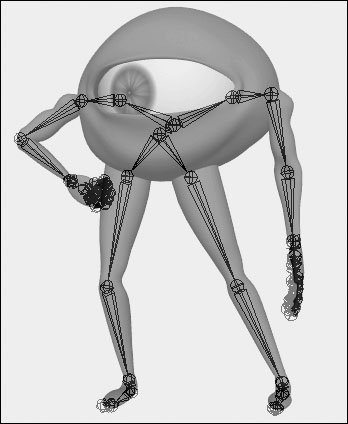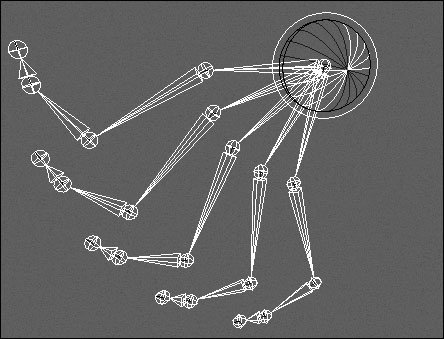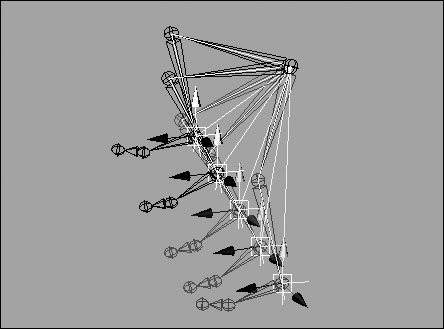Chapter 10. Skeletons And Rigging
| Once you model a character, you need to place a skeleton inside it in order to animate it (Figure 10.1). The skeleton is built as a hierarchy of individual joints connected by bones. Figure 10.1. Inside this eyeball character, you can see the skeleton, which is used to pose and animate the character. These bones typically aren't used directly to animate. Instead, you place a set of constraints on the bones. These constraints limit or alter the movement of the bones and allow you both greater control of the whole skeleton and the ability to pose the character with just a few bones or curves. In general, nature serves as the best template for placing joints: Use pictures of skeletons, human or animal. A shoulder joint should go at the shoulder; an elbow joint should go at the elbow; and so on. However, you don't need to be too literal. For example, although the human foot has 26 bones, you can animate a shoe with three bones. Wherever you want something to bend, that's where you need a joint. Joints are hierarchicalthat is, the joints at the top of the hierarchy move those beneath them. The first joint you place is at the top of the hierarchy and is often referred to as the root joint. This joint moves the whole skeleton. Because the knee, ankle, and foot joints are below the hip joint, the rest of the leg moves when the hip joint is rotated. This type of character posing uses forward kinematics (FK) (Figure 10.2). Figure 10.2. Illustrating the principle of forward kinematics. When the hip joint is rotated, all the joints below rotate with it. Inverse kinematics (IK) refers to posing from the bottom of the hierarchy up. In this type of rig, if you move the foot around, the knee and hip rotate accordingly (Figure 10.3). Sections of your skeleton must specifically be set up for IK use, whereas FK control is inherent in the bone hierarchy. Figure 10.3. The foot is moved using an IK handle. Some animators avoid IK because it tends to move limbs in straight lines rather than natural arcs.
|
EAN: 2147483647
Pages: 185


